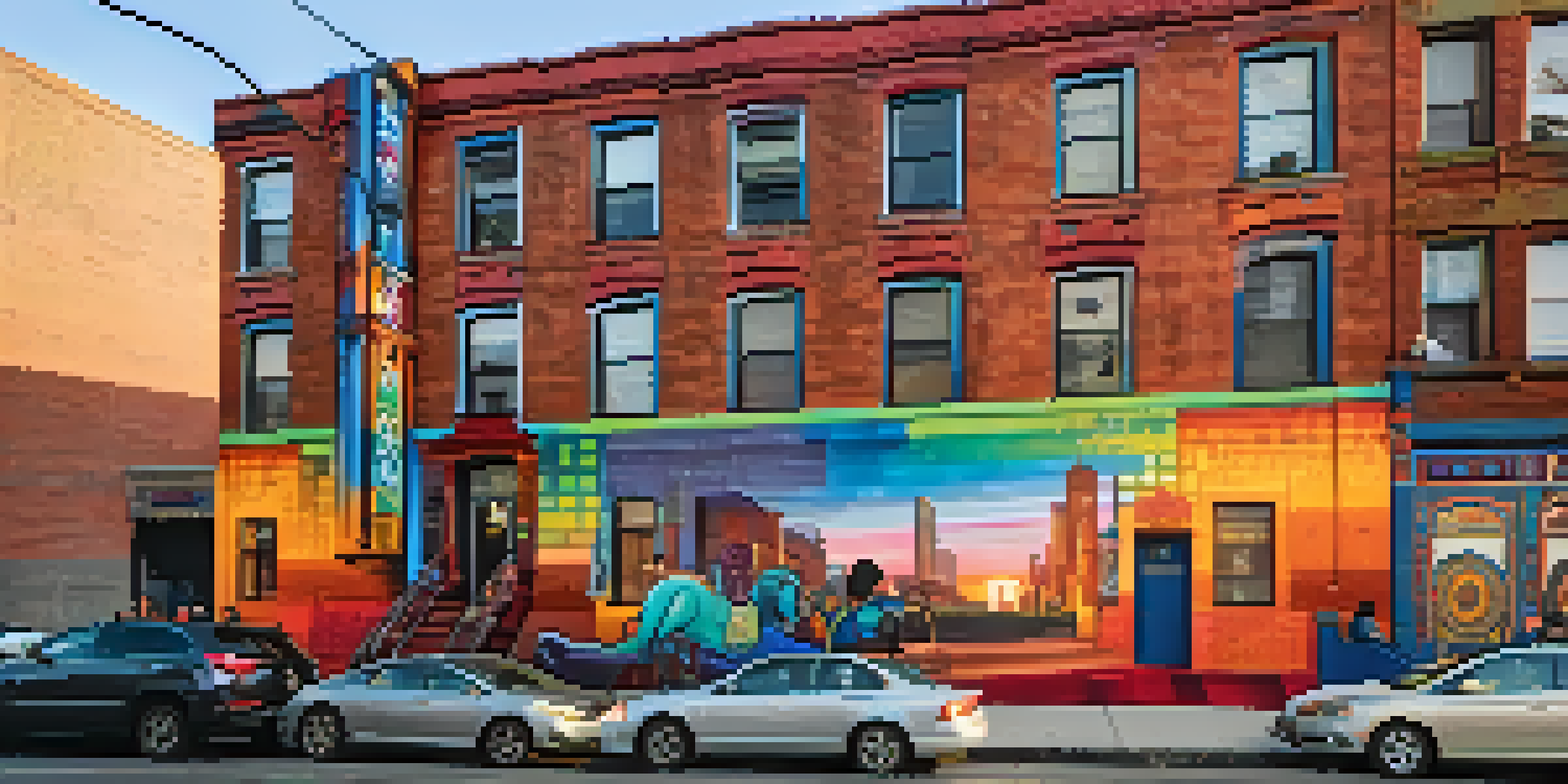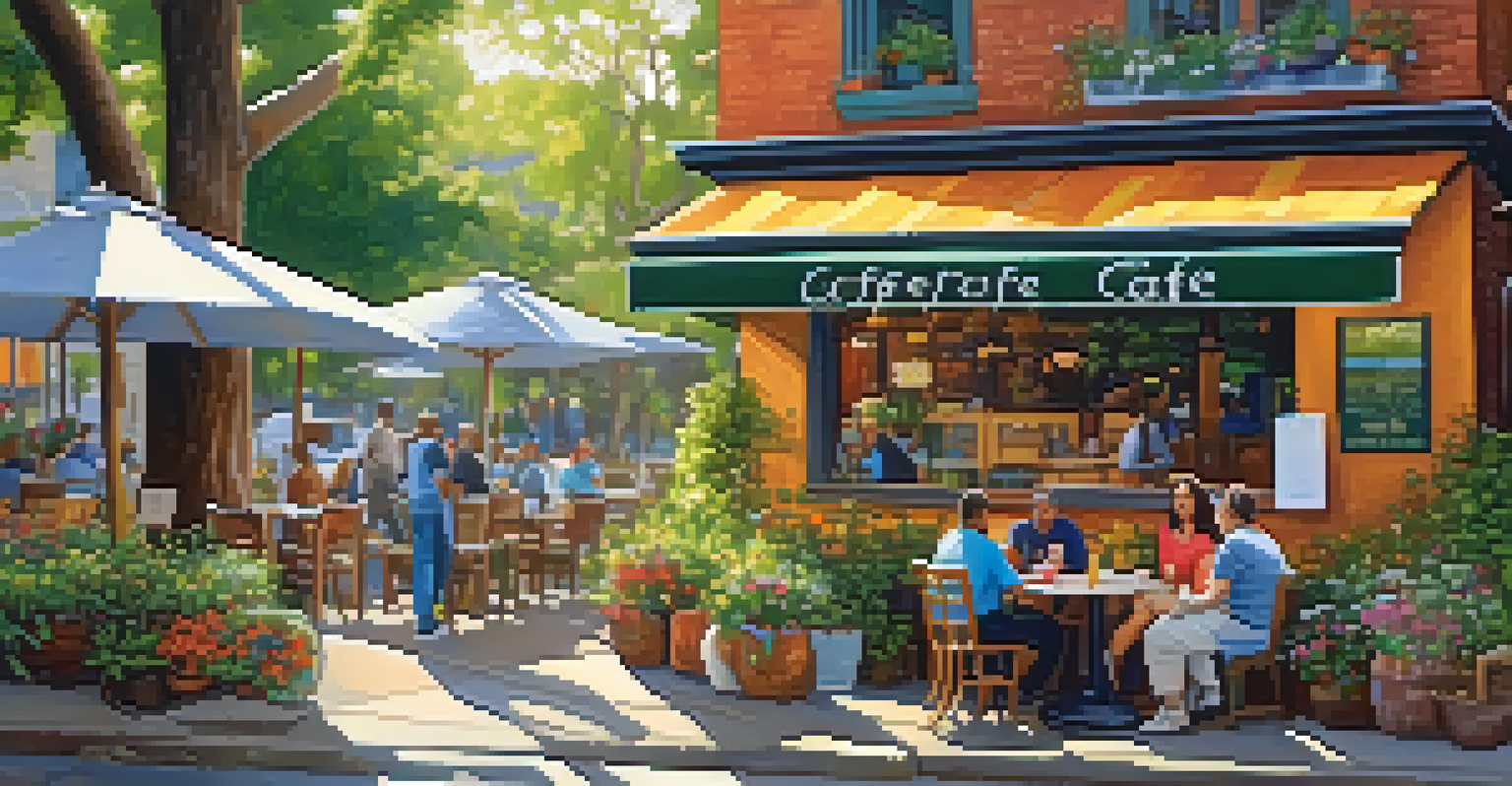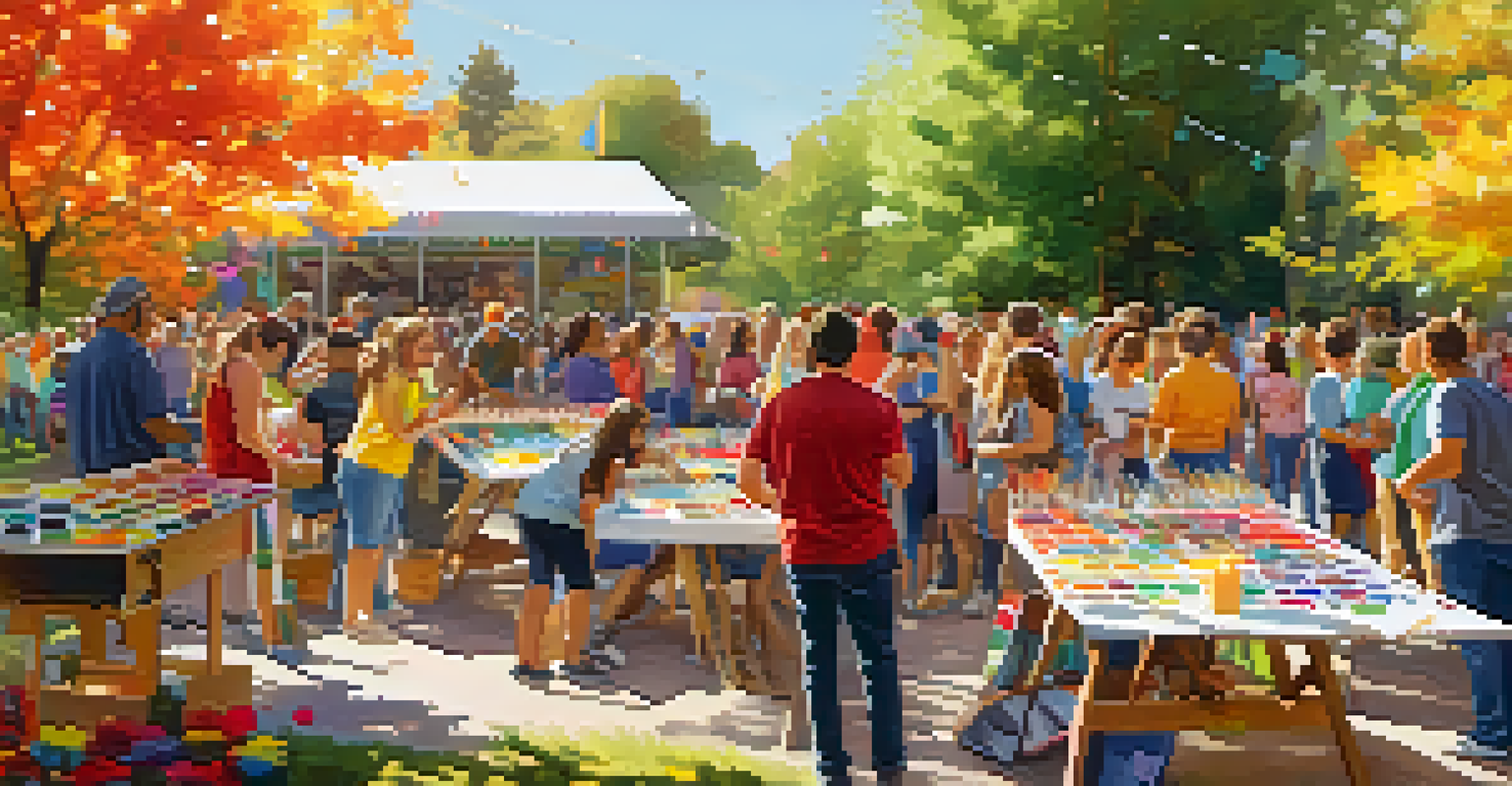The Economic Benefits of Public Art Projects in NYC

Public Art as a Tourist Attraction in NYC
Public art installations in New York City draw millions of visitors each year. Landmarks like the High Line and the murals in Bushwick not only enhance the city’s aesthetic but also serve as must-see attractions. Tourists flock to these sites, contributing to local businesses, from cafes to souvenir shops.
Public art is a way of creating connections between people and places.
These art projects create a buzz that goes beyond just the artworks themselves. They often become part of social media narratives, encouraging even more visitors to explore. When people share their experiences online, it amplifies awareness and interest, leading to increased foot traffic in the area.
The financial impact is significant; studies show that cities with vibrant public art scenes see a boost in tourism revenue. This influx not only supports local economies but also provides funding for future art projects, creating a cycle of economic growth.
Job Creation Through Public Art Initiatives
Public art projects often require a variety of skilled professionals, from artists to construction workers. These initiatives can lead to job creation, providing employment opportunities for local residents. For instance, mural projects often hire local artists, which not only supports their careers but also keeps the community engaged.

Moreover, these projects can spur additional work in related sectors, such as marketing and event planning. When a new installation is unveiled, it often involves promotional events that require staff and vendors. This ripple effect can significantly benefit the local job market.
Public Art Boosts Tourism Revenue
Public art installations in NYC attract millions of visitors, significantly contributing to local businesses and tourism income.
By investing in public art, cities not only beautify their landscapes but also provide a platform for economic development. The jobs created through these initiatives contribute to a thriving economy, enhancing the livelihoods of community members.
Enhancing Property Values Near Art Installations
Public art can increase property values in neighborhoods where it is installed. When a community invests in art, it often leads to a more vibrant and attractive environment. Homebuyers are typically drawn to areas with artistic flair, seeing them as desirable places to live.
Art is not a thing; it is a way.
Real estate studies indicate that properties near public art installations often sell for higher prices than those without. This increase in property value benefits homeowners and can lead to higher tax revenues for the city, which can be reinvested into community services.
As neighborhoods become more visually appealing, the demand for housing rises, further driving up prices. This phenomenon demonstrates how art is not only an aesthetic asset but also a strategic economic investment.
Public Art Fostering Community Engagement
Public art projects often bring communities together, fostering a sense of belonging. When locals participate in the creation or unveiling of art, they develop a deeper connection to their neighborhood. This engagement can lead to increased civic pride and community cohesion.
Events surrounding public art, such as festivals or workshops, encourage residents to interact with one another. These gatherings create opportunities for networking and collaboration, strengthening community ties. The sense of ownership over local art can empower residents to advocate for further improvements in their area.
Job Creation Through Art Projects
Public art initiatives generate employment opportunities for local residents, from artists to event planners, enhancing the local job market.
In this way, public art projects are more than just visual enhancements; they are catalysts for social interaction and community building. This engagement can translate into economic benefits as residents become more invested in their neighborhoods.
Attracting Businesses with Public Art
Public art can serve as a magnet for businesses looking to establish themselves in vibrant neighborhoods. Areas adorned with eye-catching installations often attract creative enterprises, such as cafes, boutiques, and galleries. This influx of businesses can lead to job creation and economic diversity in the area.
Moreover, businesses are likely to benefit from increased foot traffic generated by public art. When people come to see an installation, they are often inclined to explore nearby shops and restaurants. This symbiotic relationship between art and commerce can significantly boost local economies.
As a result, cities that prioritize public art not only enhance their cultural landscapes but also create an environment conducive to business growth. This dual benefit underscores the importance of investing in public art initiatives.
Public Art as a Tool for Economic Revitalization
In struggling neighborhoods, public art can play a crucial role in revitalization efforts. By transforming neglected spaces into vibrant art installations, cities can breathe new life into communities. This transformation often attracts investment and encourages new businesses to set up shop.
Successful examples can be seen in areas like Harlem and the South Bronx, where public art projects have sparked economic development. As these areas become more appealing, they attract visitors and potential residents, leading to a positive cycle of growth and investment.
Art Increases Property Values
Neighborhoods with public art often see increased property values and demand, benefiting homeowners and local municipalities.
This revitalization through art not only improves the local economy but also enhances the quality of life for residents. As neighborhoods flourish, community members often feel more secure and engaged, creating a win-win scenario.
Long-Term Economic Impact of Public Art
The benefits of public art extend far beyond its initial impact; they can have lasting economic effects. Well-planned art projects contribute to the cultural identity of a city, making it a more attractive place to live and work. This can lead to a sustained influx of new residents and businesses over time.
Cities with a strong public art presence often enjoy enhanced reputations as cultural hubs. This reputation can attract not only tourists but also investors and skilled professionals seeking a vibrant community. The long-term economic gain can be substantial, providing a steady flow of revenue.

Ultimately, investing in public art is a strategic endeavor for cities aiming for sustainable economic growth. It creates a unique identity and fosters a thriving ecosystem that benefits all members of the community.